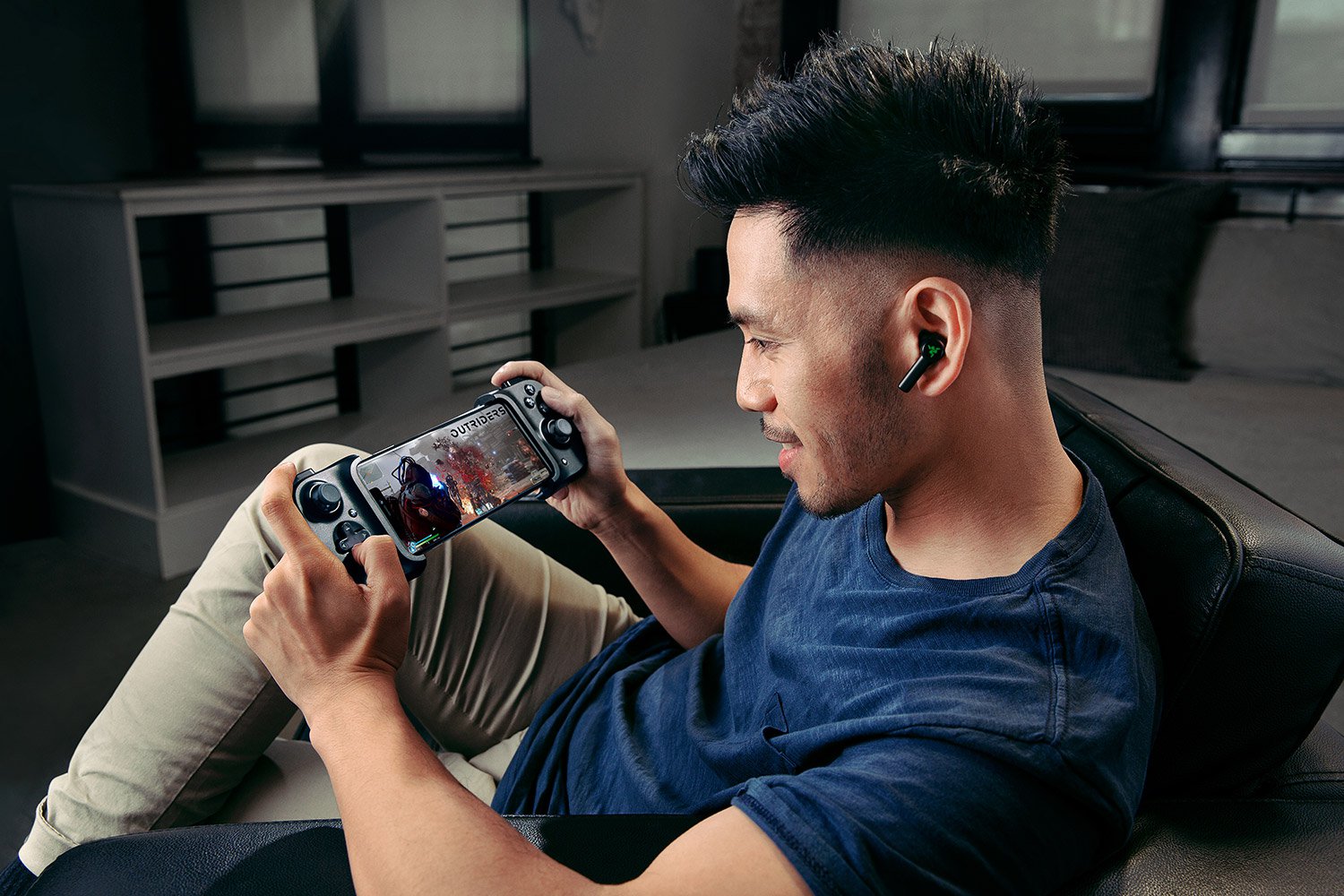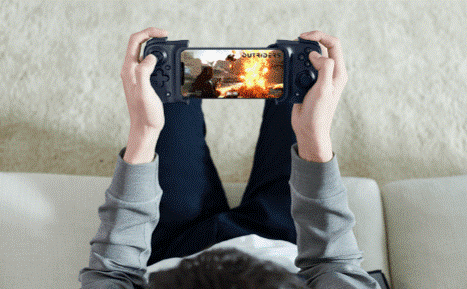

When playing FPS games, because of the small size, it’s a little harder to do the claw-style grip that I usually use to hit face buttons. It’s nice to have the option of additional mappable buttons near the triggers. So depending on the titles you intend on playing, that might not be an issue. When playing Diablo Immortal, where there is more input from the face buttons than the right thumb stick, I didn’t feel that same discomfort. Now, I mainly noticed this when playing Call of Duty: Mobile, where I need my thumbs in nearly constant movement.

For me, that extra bit of space can make the controller feel more comfortable. Even on the Backbone One, there is a little over an inch of room. Measuring from the center of the stick to the outside of the V1 controller, there are nearly 1.25 inches while on the V2 it’s closer to ⅞ of an inch of space.įor me, that can make my right hand feel cramped, as I like to have my palm in contact with the side of the controller.

My right hand also feels more cramped on the V2 because of the smaller handle size. They have a bit more movement, and I feel like I can be a little more precise with them when playing FPS games. The sticks are more like the Xbox controllers that I’m used to. While the buttons are smaller, the tactile click is a much more rewarding experience.īut I prefer the size and stick feel of the V1 Kishi. The face button and d-pad feel are also a big improvement.
#Backbone one controller vs razer kishi portable
While it isn’t as portable as the collapsible V1, the stability is a better experience when actually gaming. Occasionally with the V1, the controller felt a little loose on my phone, which isn’t a great experience. I think the back brace style is a significant improvement for overall stability. First, here’s what I like about the Kishi V2. There are parts that I like about both controllers. I actually find myself wishing for a hybrid of the two. The Kishi V2 is a big change from the OG Kishi. There is support for streaming on Facebook and YouTube currently in the app, and Razer has mentioned that Twitch support will be coming soon. Otherwise, the app doesn’t have a whole lot to offer.īecause we’re on iOS, any other controller button remapping can be accomplished through the system settings, which is great for me since I play southpaw and inverted. Besides giving a bunch of suggestions for games to try, here is where you can remap the multifunction buttons. Razer has a new Nexus app for the Kishi V2. They’re smoother than the Kishi V1 and have a bit more resistance than the Backbone One, which I enjoy for gaming. The triggers have what I would describe as the best feel among the three controllers I’ve mentioned so far in this review. I really enjoyed the sticks from the V1 – they felt more like a full-fledged console controller than the smaller sticks on the Backbone One and Kishi V2. This is one of the areas where I feel like the Kishi V2 is a step in the wrong direction. Pressing the sticks in gives a very satisfying click. I will say, at least so far, it feels like they have just a bit more resistance, which I do prefer over the Backbone One’s thumb sticks. The sticks are smaller than the V1 and have more of a Backbone One look and feel to them. Likewise, the d-pad has also been given microswitches with a clicky sound and a feel that is very satisfying in use. When compared to the V1, the V2’s microswitch buttons have a very satisfying click that I didn’t know I was missing on the older Kishi. Face Buttonsįor the Kishi V2, Razer is using smaller face buttons but the feel of them has been improved. Through Razer’s Nexus app, these can be programmed to any face, d-pad, bumper, or stick click input. One large addition with the Kishi V2 is two additional multifunction buttons near the triggers. On my iPhone 8, I can use the controller with the QuadLock case I have installed, but it looks like the expandable bridge is bending a bit, so I usually take it out. When those spacers are removed, this extra space also means that some cases are supported.

It also uses spacers on either side that should accommodate all current phones as well as future phones with larger camera bumps. Just like the BackBone One, the Kishi V2 expands to fit devices of different sizes. The only similarities are the position of the menu buttons and the lack of a 3.5mm port for wired audio. From the top, you can’t even see a Razer logo or triple-headed snake anywhere – you have to look at the side or the back when the brace expands.Ĭompared to the Kishi V1, the V2 is a complete redesign. Comparing the Kishi V1, V2, and Backbone One, you would think that the Kishi V2 is really a V2 of the Backbone One.


 0 kommentar(er)
0 kommentar(er)
